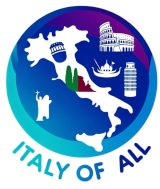The province of Catanzaro, situated in the Calabria region of southern Italy, is distinguished by its diverse landscapes, which range from picturesque coastlines along the Ionian and Tyrrhenian Seas to rugged mountains and rolling hills in the interior. This area serves as a cultural and administrative hub for the region, combining rich historical heritage with natural beauty.
Geographically, the province is split between the coastal areas, which feature beautiful sandy beaches and cliffs, and the interior, characterized by the Sila plateau. The Sila is noted for its dense forests and mountainous terrain, offering opportunities for hiking, skiing, and nature watching in the Sila National Park, which is one of the province’s main natural attractions.
Historically, Catanzaro has a layered history that reflects various cultural influences over the centuries, including the Byzantines, Normans, and Bourbons. This history is visible in the architecture and archaeological sites throughout the province. Catanzaro itself is known for its impressive bridge, the Viaduct Morandi-Bisantis, which symbolizes the city’s post-war redevelopment and offers stunning views of the surrounding landscape.
Culturally, the province of Catanzaro is rich in traditions, with numerous local festivals and events that celebrate its history and folklore. The area is renowned for its craftsmanship, particularly in silk and velvet, a legacy of its historical importance as a center for textile production during the Middle Ages.
Cuisine in Catanzaro reflects the agricultural and coastal resources of the area, with a diet rich in olive oil, wine, and citrus fruits from the inland areas, alongside seafood from the coastal regions. Typical dishes include ‘fileja’ (a traditional pasta served with various sauces), and ‘pitta mpigliata’, a sweet pastry that is popular during holiday seasons.
Economically, Catanzaro’s economy is primarily based on agriculture, including olive oil and wine production, alongside growing sectors such as tourism and services. The development of tourism is particularly focused on enhancing the accessibility and infrastructure around its natural parks and historical sites. The province also benefits from its central location in Calabria, which facilitates economic interactions with the other parts of the region.
Despite challenges related to economic development and the need for more robust infrastructure, the province of Catanzaro continues to evolve, leveraging its historical assets and natural beauty to enhance quality of life and attract visitors. Efforts to promote sustainable tourism and protect its environmental assets are central to the province’s strategy for future growth.
Overall, Catanzaro offers a unique blend of natural landscapes, historical depth, and cultural richness, making it an integral part of Italy’s cultural and economic landscape. Its commitment to preserving its heritage while fostering sustainable development presents a dynamic future for its residents and visitors alike.
Comuni in Catanzaro Province:
- Badolato
- Belcastro
- Amaroni
- Botricello
- Argusto
- Amato
- Catanzaro
- Caraffa di Catanzaro
- Carlopoli
- Davoli
- Decollatura
- Feroleto Antico
- Curinga
- Feroleto della Chiesa
- Fossato Serralta
- Cortale
- Conflenti
- Cicala
- Centrache
- Falerna
- Cropani
- Gizzeria
- Maida
- Marzi
- Lamezia Terme
- Gagliato
- Gimigliano
- ** Gasperina
- Guardavalle
- Jacurso
- Marcellina
- Martirano Lombardo
- Magisano
- Martirano
- Montepaone
- Nocera Terinese
- Montauro
- Miglierina
- Paterno
- Palena Palermiti
- Olivadi
- Pianopoli
- Platania
- Petrizzi
- San Calogero
- Petronà
- Satriano
- San Pietro Apostolo
- Sellia Marina
- Serrastretta
- Soverato
- Stalettì
- Simeri Crichi
- San Mango d’Aquino
- Soveria Simeri
- Squillace
- Santa Caterina dello Ionio
- San Sostene
- Sersale
- Soveria Mannelli
- San Vito sullo Ionio
- Settingiano
- Sant’Andrea Apostolo dello Ionio
- San Floro
- San Pietro a Maida
- ** Sorbo San Basile
- Vazzano
- Vallefiorita
- Torre di Ruggiero
- Tiriolo
- Zagarise
